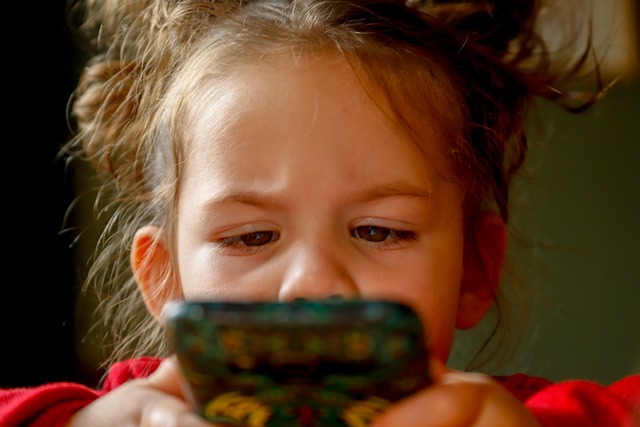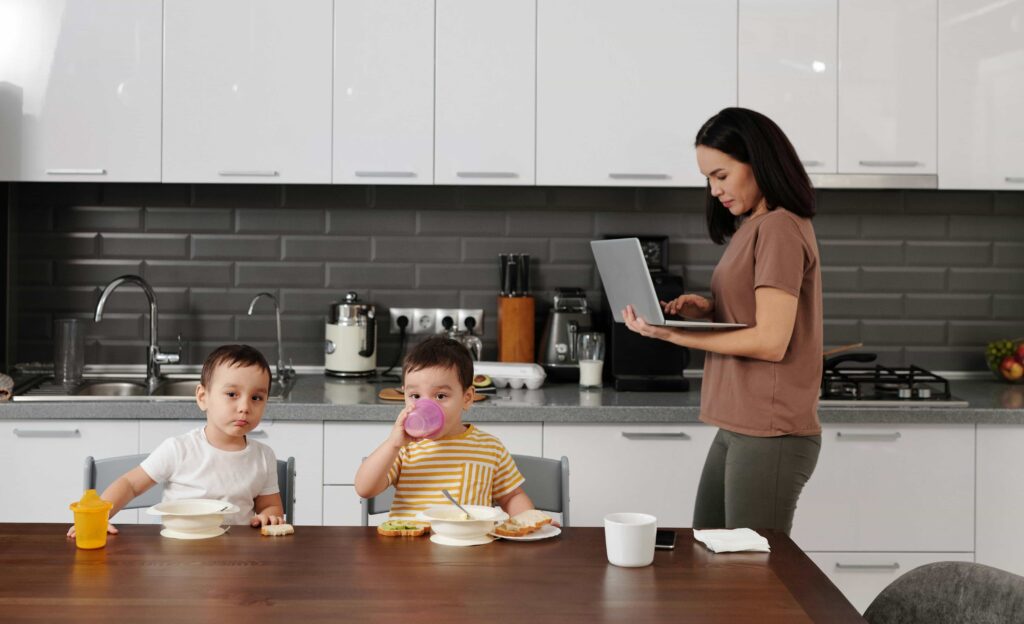
Table of Contents
Introduction
In today’s digital world, reduce your child’s screen time can feel like an uphill battle, but you’re not alone. Whether it’s TV, tablets, phones, or video games, screens are everywhere, and kids are naturally drawn to them. The tricky part? Finding the right balance between screen time and real-life activities. If you often search for How Do I Reduce my Child’s Screen Time without a meltdown, this blog post is for you. Let’s dive in.
1. Understanding the Screen Time Problem
1.1 What Counts as Screen Time?
Before we can reduce screen time, it’s important to understand what it actually includes. Screen time is any time spent in front of a digital screen. That means television, tablets, smartphones, laptops, desktops, and gaming consoles all count.
There’s also a big difference between passive screen time (like watching YouTube or bingeing a cartoon) and active screen time (like doing homework online or chatting with Grandma on a video call). Not all screen time is created equal, but too much of any kind can be a problem.
1.2 How Much is Too Much?
The right amount of screen time varies by age, but there are clear guidelines from experts. For example, the American Academy of Pediatrics recommends:
- No screen time (except video calls) for kids under 18 months.
- Up to 1 hour of high-quality programming for kids aged 2 to 5.
- Consistent limits and balanced activities for kids aged 6 and up.
That said, every child is different. If your kid is moody, tired, or skipping meals because they’re glued to a screen, that’s a red flag.
2. The Effects of Too Much Screen Time
2.1 Physical Health Risks
Extended screen use can have a bad effect on your child’s physical well-being in surprising ways. Long screen time can cause eye strain, headaches, and trouble sleeping. Sitting in the same position for hours can also lead to poor posture and even back or neck pain.
Plus, the more time kids spend with screens, the less time they spend moving. That can lead to weight gain and lower energy levels.
2.2 Mental and Emotional Impact
Too much screen time doesn’t just affect the body—it can change the way your child thinks and feels. Some studies link excessive screen use to anxiety, irritability, and mood swings in kids.
It also affects how kids focus. With fast-paced videos and endless scrolling, children can get used to constant stimulation, which makes it harder to concentrate on slower, real-world activities like reading or chores.
2.3 Social and Behavioral Changes
Screens can affect how kids interact with others and manage their emotions. Instead of playing with friends or talking to family members, kids may choose to sit alone with a device. Over time, that can lead to social withdrawal.
Behavioral issues can also pop up, like arguing when it’s time to turn off the tablet or refusing to participate in family activities.
3. Why Kids Get Hooked on Screens

3.1 The Design Behind the Addiction
Many apps and games are intentionally designed to keep your child engaged for as long as possible. You know that endless scroll or autoplay on YouTube? That’s no accident.
These features give the brain tiny dopamine hits—little bursts of pleasure that keep kids (and adults!) coming back for more. The bright colors, fun sounds, and instant rewards make screens very hard to resist.
3.2 Filling Emotional or Social Gaps
Sometimes, kids use screens to escape boredom, stress, or loneliness. Think of it like a digital comfort blanket. If your child doesn’t have many friends, is feeling anxious, or is just plain bored, screen time can feel like an easy fix.
That’s why it’s important to understand why your child is turning to a screen before you jump to cut it off.
4. Practical Strategies to Reduce Screen Time
4.1 Start With a Family Screen Time Audit
You can’t fix what you can’t measure—so begin by tracking current usage. Take note of how many hours your child spends on screens each day and what they’re doing.
There are free apps like Google Family Link or Apple’s Screen Time that make this easy. After a few days, you might be surprised by how the hours add up.
4.2 Set Clear and Consistent Limits
Establishing boundaries helps your child know what to expect and why it matters. Instead of vague rules like “Don’t use your iPad too much,” try being specific: “You can have 1 hour of screen time after homework.”
Make sure everyone in the family is on the same page. Consistency is key. And when your child follows the rules? Celebrate it with praise or a small reward.
4.3 Create Screen-Free Zones and Times
Designating certain places and times as screen-free can bring big results with small effort. Easy wins include:
- No phones at the dinner table
- No tablets in the bedroom
- No screen use 1 hour before bed
These rules create natural breaks and encourage connection with others.
4.4 Be a Role Model
Your child is more likely to follow your lead than your rules, so make sure you’re modeling balance. If you’re always on your phone, they’ll assume it’s normal behavior.
Try putting your own devices away during meals or family time. Show them that real life matters more than what’s on a screen.
4.5 Offer Engaging Alternatives
Replacing screen time with fun, meaningful activities is one of the most effective strategies. What else does your child love? Drawing, biking, building Lego towers, playing outside—all of these can compete with a tablet if you make them fun and accessible.
You can even create a “boredom jar” filled with fun ideas for what to do when there’s “nothing to do.”
5. Handling Resistance and Challenges
5.1 Dealing with Tantrums or Pushback
Expect some resistance—but there are ways to manage it with patience and consistency. Stay calm, stick to the rules, and don’t give in during a meltdown. Over time, your child will adjust to the new routine.
You can also use positive reinforcement: Praise or reward them when they turn off the screen without a fight.
5.2 Involving Your Child in the Process
Kids are more cooperative when they feel heard and involved in setting their own limits. Sit down with your child and talk about screen time. Ask them how they feel about it, and brainstorm together what a healthy routine could look like.
When kids help set the rules, they’re more likely to follow them.
6. Tools and Resources to Help
6.1 Parental Control Apps and Tools
Technology can actually help you control technology—if you use the right tools. Here are a few to explore:
- Apple Screen Time (iOS)
- Google Family Link (Android)
- Qustodio and Net Nanny (for more control and reporting)
These apps let you set limits, track usage, and even pause devices during family time.
6.2 Books, Podcasts, and Websites
There’s a wealth of helpful information out there for parents trying to cut screen time. Here are some great places to start:
- Books: “The Tech-Wise Family” by Andy Crouch
- Websites: Common Sense Media (great for age-appropriate content reviews)
- Podcasts: “Your Parenting Mojo,” “Raising Good Humans”
7. Encouraging a Long-Term Healthy Relationship with Screens
7.1 Teaching Digital Literacy and Balance
Instead of fearing screens, teach your child how to use them wisely. Talk about the difference between helpful and harmful content. Teach them about online safety, kindness, and taking breaks.
You’re not just reducing screen time—you’re helping your child build lifelong habits.
7.2 Adapting the Plan as Your Child Grows
Your screen time strategy should grow with your child’s needs and maturity. What works for a 5-year-old won’t work for a teenager.
Keep the conversation going. Check in regularly and adjust the rules as needed.
Final Thoughts: Progress Over Perfection
Reducing your child’s screen time takes effort and patience—but the rewards are well worth it. You don’t have to be perfect. Even small changes, like one less hour of screen time a day, can make a big difference.
Remember, it’s not about banning screens entirely. It’s about teaching your child to enjoy life beyond the screen.
So take a deep breath, start small, and celebrate every win along the way. You’ve got this.
FAQs About Reducing Screen Time
Q: What is a healthy amount of screen time for my child?
A: It depends on their age, but generally, 1 hour per day for ages 2-5, and consistent limits for older kids is a good rule of thumb.
Q: Should I completely ban screens?
A: Not necessarily. It’s better to teach moderation and help kids develop a balanced relationship with screens.
Q: What if my child uses screens for school?
A: Schoolwork doesn’t count as recreational screen time. Just make sure they get breaks and time offline afterward.
Q: How do I reduce screen time without constant fighting?
A: Involve your child in setting limits, offer fun alternatives, and be consistent. Routine helps reduce resistance.
Q: Is screen time always bad?
A: Not at all! Some screen time is educational and even beneficial. The key is balance and quality of content.


